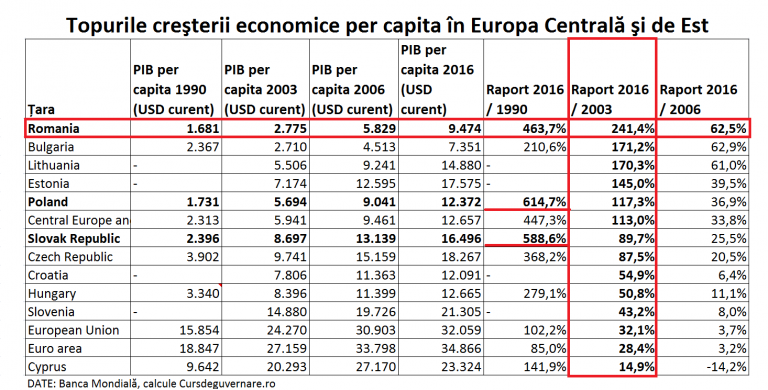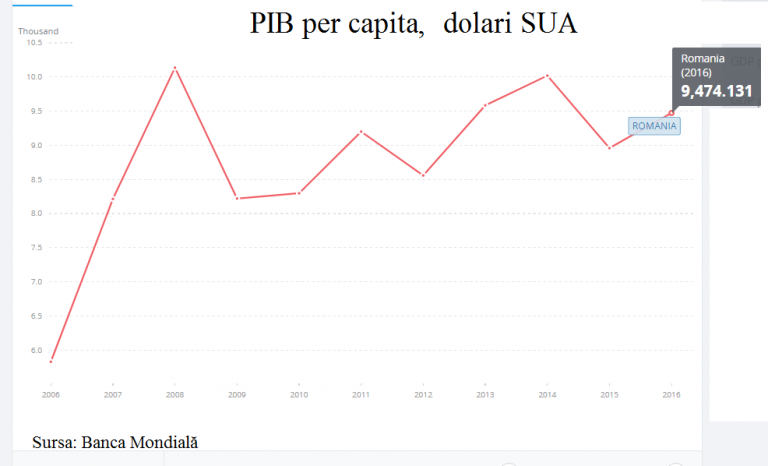*
- GDP growth before and after EU accession
- Source: World Bank
*
Romanians registered the largest advance of the gross domestic product (GDP) per capita among the Central and Eastern Europe countries in 2016, compared to 2003, even though most of them officially joined the European Union as early as in 2004 and Romania joined only in 2007, according to the World Bank data.
The growth of GDP per capita was over 241% in Romania in 2016 compared to 2003, in current prices expressed in US dollars, well above Poland (over 117%), Slovakia (90%), the Czech Republic (87%) or Hungary (51%).
However, an interesting phenomenon was observed: Poland and Slovakia recorded spectacular advances even before joining the EU – with increases of 614% and 588%, respectively, compared to 1990. Romania recorded, in the same context, an advance of 464% in 2016 compared to 1990.
Romania (the same as Bulgaria, in fact) took advantage of the accession perspective, even more than the accession itself and the crisis started in 2008 had, of course, an important contribution to diminishing the momentum.
Consequently, the growth of GDP per capita in Romania and Bulgaria in 2016 compared to the year before the accession (2006), although still the highest (almost 63%), decreased by six, respectively three times compared to those registered against 2003.
*
- Ranking of GDP per capita growth in CEE
- Country GDP per capita 1990 (current USD) GDP per capita 2003 (current USD) GDP per capita 2016 (current USD) 2016/1990 ratio 2016/2003 ratio 2016/2006 ratio
*
As compared to 1990, Romanians’ GDP per capita growth (464%) was the third largest after the Poles (615%) and the Slovaks (589%), respectively.
Romania has never replicated the growth from its first year of EU membership, the largest in its history, of 41% compared to 2006, to a GDP per capita of USD 8,214 in current prices. True, there have been the years of strong consumer stimulation based on the loans granted in a casual manner by banks and spent on imports.
And, in fact, the 10,136 US dollars GDP per capita in 2008 has never been reached again, as this indicator stopped last year to 9,474 US dollars, just 15% more than in 2007.
*
- GDP per capita, US dollars
*
However, with a GDP per capita of 10,020 US dollars, 2014 came close to the peak of 2008.
The other new EU members have replicated Romania’s evolution, with large variations and at higher absolute levels of GDP per capita.












